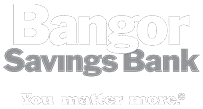
Online bill paying has become a mainstream practice. According to a recent report from The Financial Times, over 72% of all bills in the U.S. are now being paid online, with 35% of these payments processed via mobile apps. Millennials and Gen Z consumers are leading the way, with 76% and 67% of their bills paid online, respectively.
The popularity of online bill paying isn’t surprising. It’s convenient, environmentally friendly, and can save consumers both time and money. Here’s why you should consider embracing online bill payment:
Convenience
Think about the effort involved in mailing your bills: writing a check, recording the amount, addressing an envelope, finding a stamp, and making a trip to the post office or nearest mailbox. With the average U.S. household paying more than 15 bills a month, this adds up to a significant amount of time and effort.
Online bill paying eliminates this hassle. Simply log into your bank’s website or mobile app, enter your credentials, and access your account. From there, you can:
- Manually pay bills: Enter payment details for your creditors.
- Set up automatic payments: Ensure bills are paid on time without any manual effort.
Most banks and credit unions today offer online bill payment services, and the majority of these services are free. Setting up online bill pay is as simple as calling your bank or enrolling through their website or mobile app.
Cost Savings
Online bill paying doesn’t just save time; it can also save money.
- According to ClearPoint Credit Counseling, the average U.S. household spends more than $70 annually on postage for mailing bills.
- This doesn’t account for the cost of envelopes, checks, or gas for trips to the post office.
Switching to online bill paying eliminates these costs entirely. Over time, even small savings like these can add up. For example, $70 saved annually over five years amounts to $350—money that could be better spent elsewhere.
Environmental Benefits
For environmentally conscious consumers, online bill paying is a simple way to reduce waste.
- Paper Usage: Traditional bill payments require paper bills, checks, and envelopes, all of which are unnecessary with online payments.
- Carbon Footprint: Reducing the need for postal delivery and trips to the post office helps cut down on emissions.
Switching to online bill payments can make a noticeable difference in reducing paper waste and supporting greener practices.
Security
While some consumers worry about the security of online bill payments, modern banking platforms use advanced encryption to protect personal and financial data. Additionally, you can take steps to safeguard your accounts:
- Use Strong Passwords: Create complex passwords that include a mix of numbers, symbols, and uppercase and lowercase letters. Avoid using easily guessed information like birthdays or common words.
- Beware of Phishing Scams: Banks will never ask for your password, Social Security number, or account details via email or phone. If you receive such a request, contact your bank directly to verify its legitimacy.
- Enable Two-Factor Authentication: Many banks offer this feature for added security, requiring a second verification step (e.g., a text message code) when logging in.
- Monitor Your Accounts Regularly: Check your bank statements and transaction history frequently to spot any unauthorized activity.
Why Embrace Online Bill Paying?
Online bill paying offers numerous benefits:
- Convenience: No more writing checks or making trips to the post office.
- Savings: Eliminate costs associated with stamps, envelopes, and checks.
- Eco-Friendly: Reduce paper waste and your carbon footprint.
- Security: Enjoy peace of mind with modern encryption and secure banking practices.
As online banking platforms and mobile apps continue to improve, adopting online bill paying has never been easier or safer. Whether you’re looking to save time, money, or the environment, making the switch is a smart choice.
